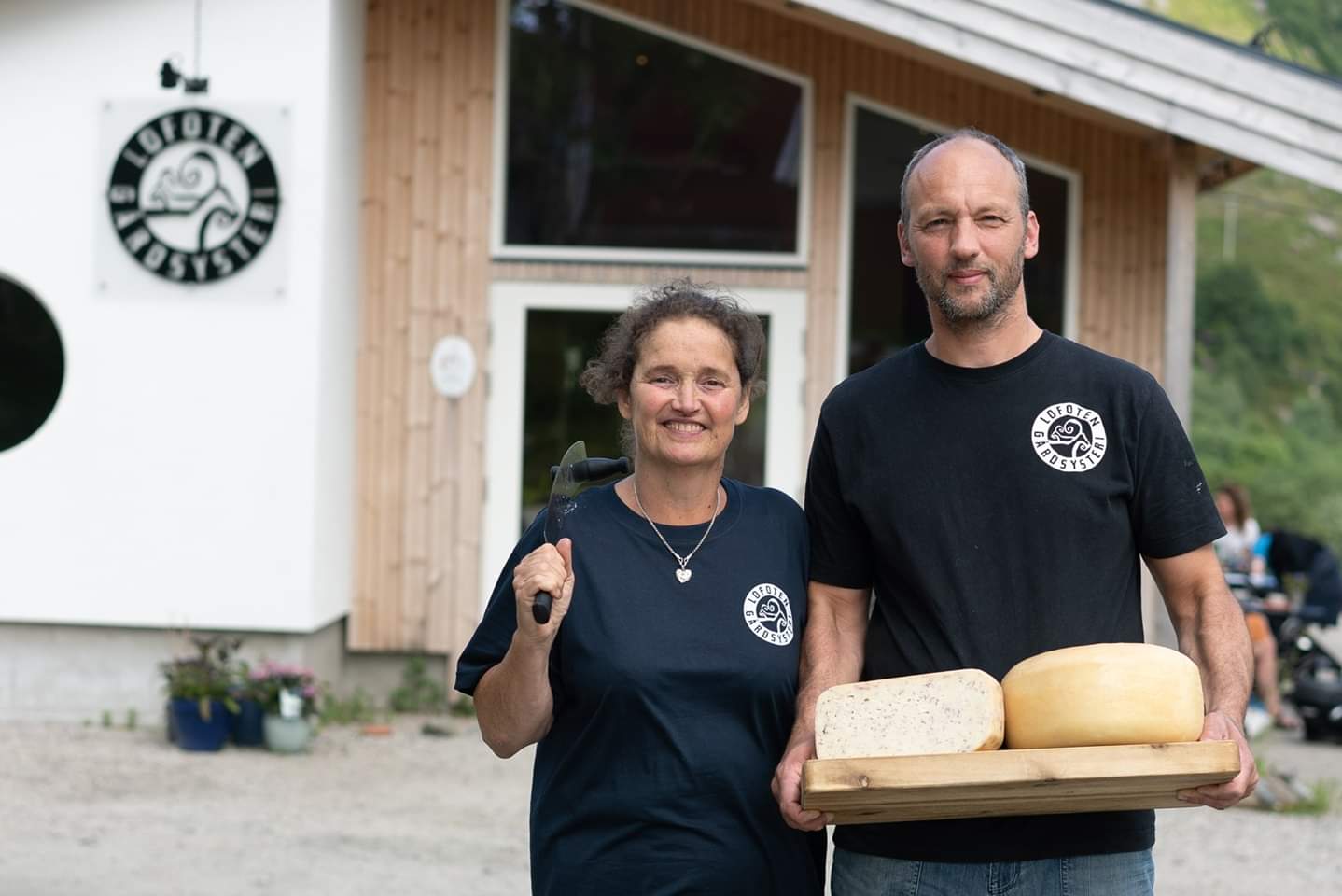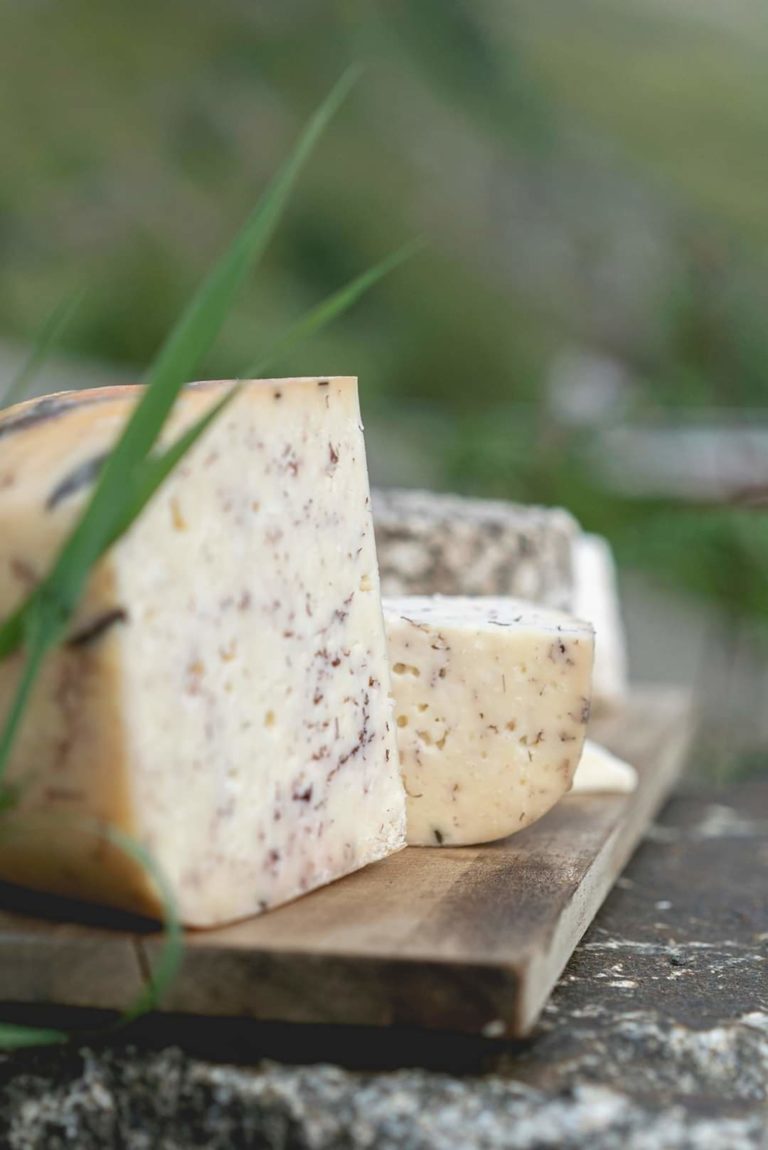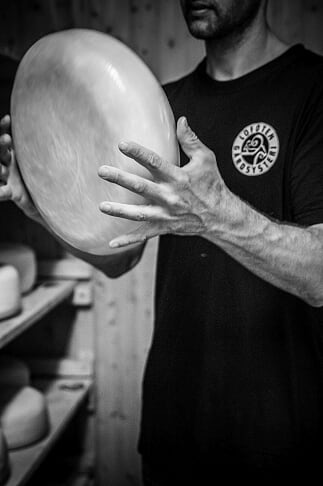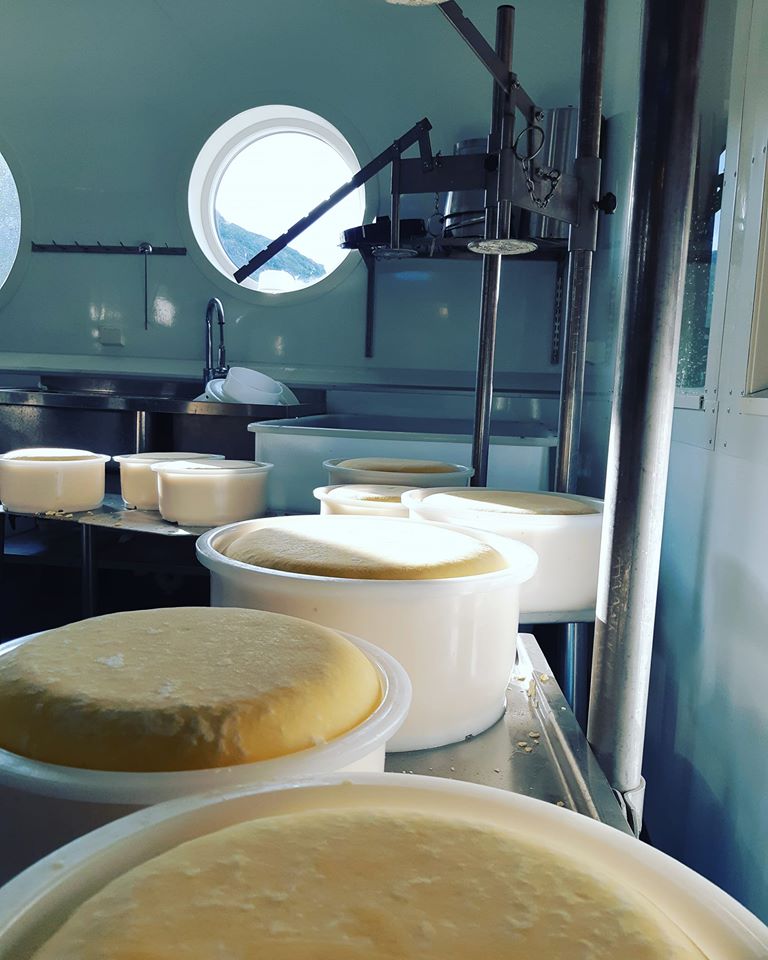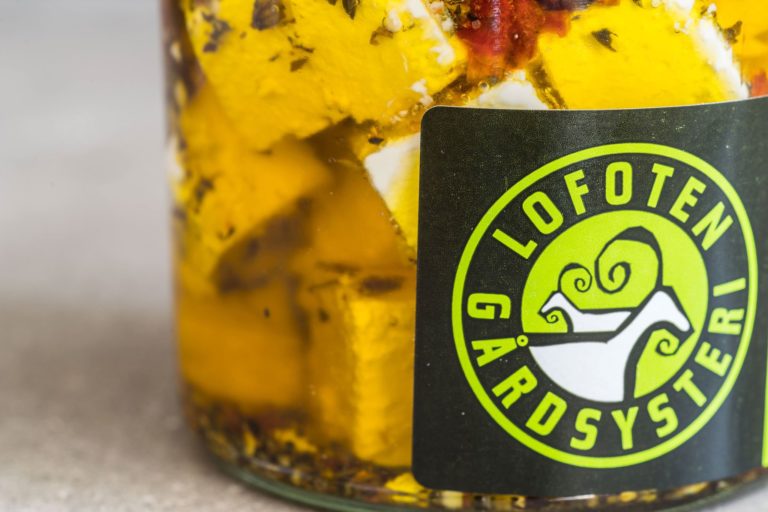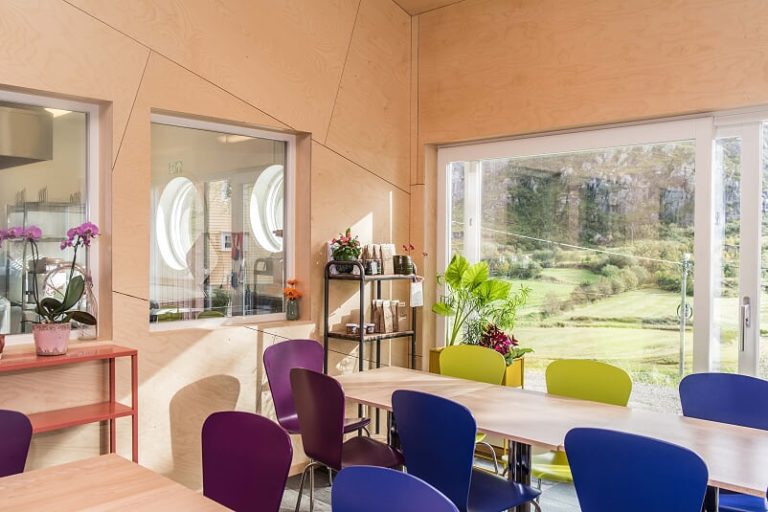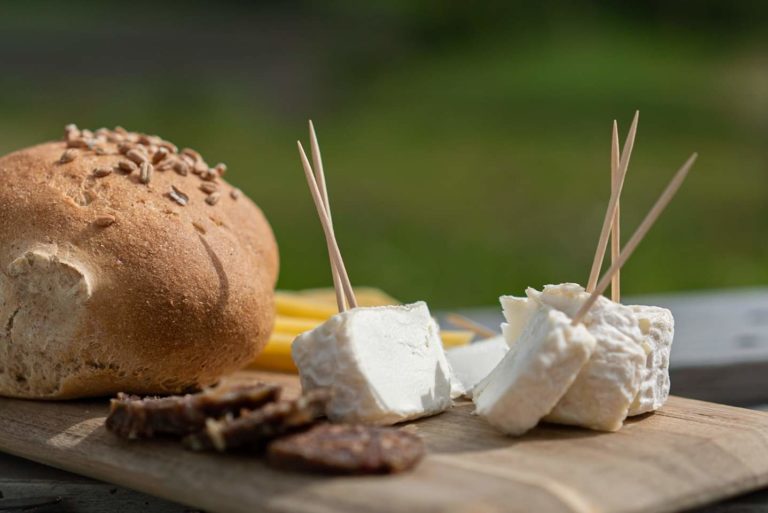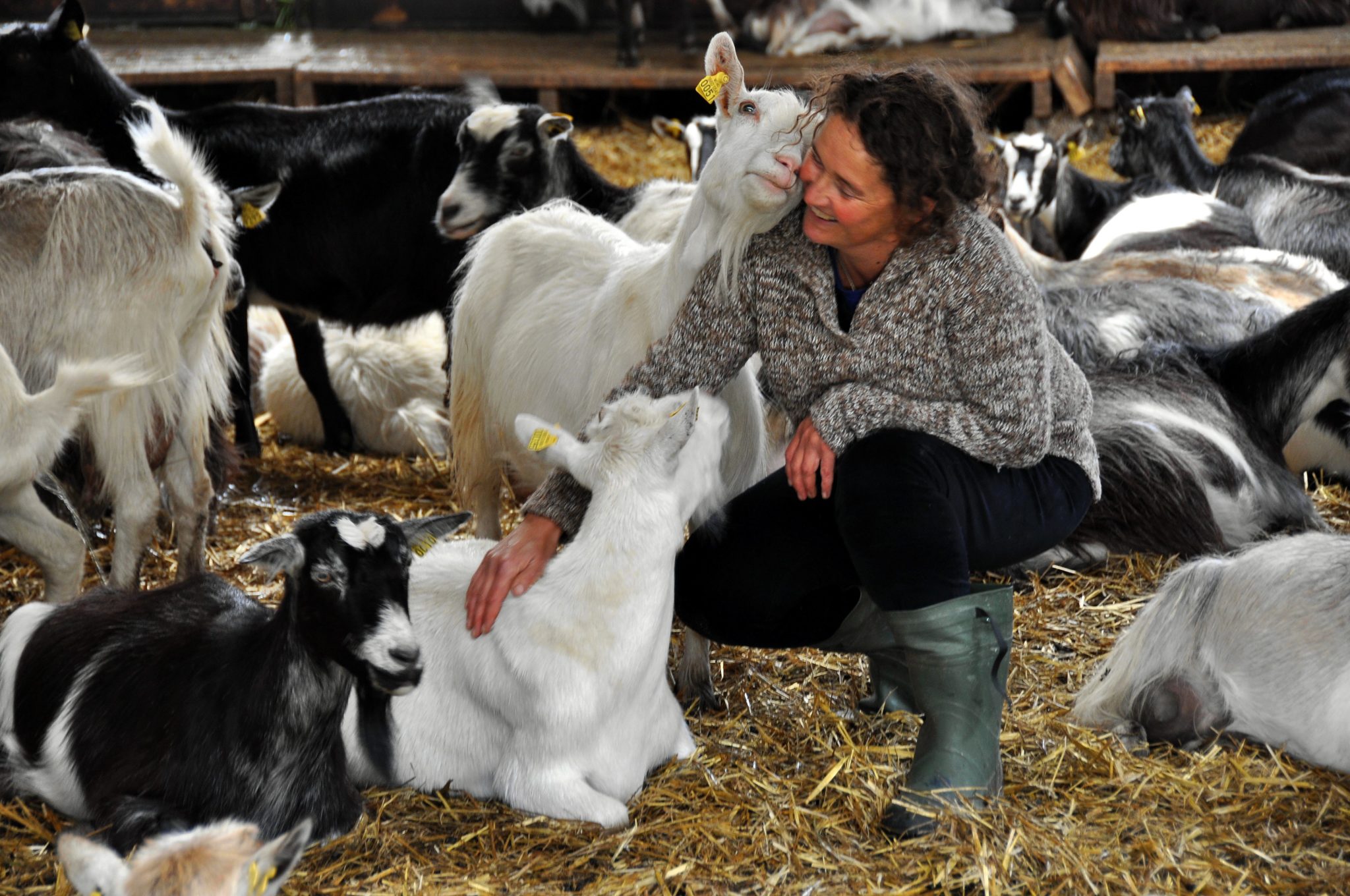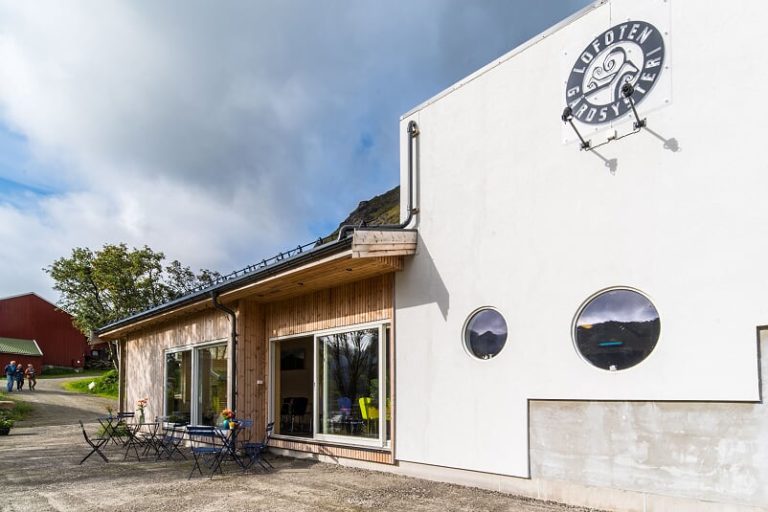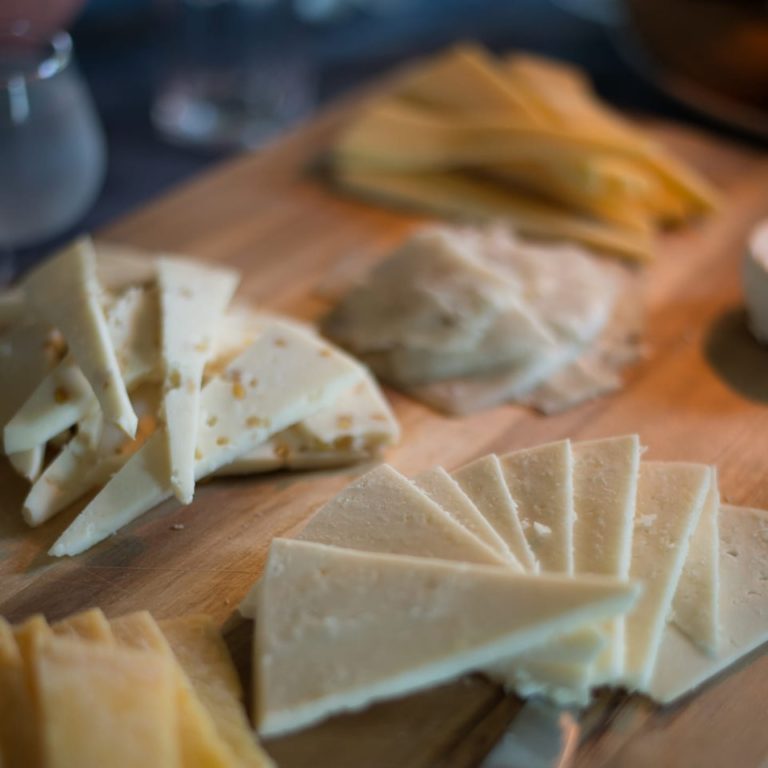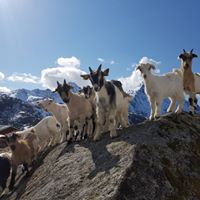Originally from the Netherlands, Marielle de Roos and Hugo Vink run a goat farm at Saupstad on Vestvågøya island in Lofoten, and have 150 goats. The organic farm is spectacularly located beneath the Lofoten mountains, has a 200 year old farmhouse, and welcomes visitors who come to buy cheese, sausages and kid meat.
The goats live a fully free range lifestyle
We were allowed a look into the goat-shed, although we couldn’t go inside for hygiene reasons. It is divided into large pens for the goats, which have plenty of room to move around. In spring the herd is taken for walks in the fresh air, then in summer the goats spend all day grazing outside. They are let out in the morning, graze to their hearts’ content up on the steep slopes, and come back to the farmhouse at around five o’clock to be milked. They come back quite voluntarily, since they are social animals who like routine, and their udders are full of milk, so they return quite happily in one big group.
Practical information about Lofoten Gårdsysteri
Lofoten Gårdsysteri is located on the island of Vestvågøya in Lofoten. If driving the E10 route through Lofoten westward, just after the Viking Lofotr museum there is a turning towards Unstad (great surfing destination). Take the turning and you should seen signage for Lofoten Gårdsysteri.
Cheese making classes, a mountain tour with lunch included and a farm tour are all options to make the most of your day. Just make sure to enquire before visiting by checking out the farm website. The facebook page also offers updates on what’s happening at the farm allowing you to follow life at the farm throughout the year.
Yes, and actually at the farm itself. The farm has its own air bnb accommodation set in the fairytale landscape of the valley. The coastal community at Unstad also has accommodation if you like to stay nearer the coast. It’s a great detour to take if you have the time while driving through Lofoten.
Destination Lofoten is your number one source of information for the Lofoten area from experiences to hikes to accommodation.
The farm uses only organic means
The farm is organic, and uses no pesticides or artificial fertiliser. Hugo explains that production declined rapidly when they first went organic. However, it then started to climb slowly, and now the grass grows as lush as it ever did. The only difference is that now it is more pure and natural. Hugo has planted clover, which fixes nitrogen from the air. Nitrogen is an important ingredient in artificial fertiliser, but the clover provides plenty of nitrogen, the natural way.
You can try variations of goat’s cheese
A selection of white cheeses are made on the farm. Steinfjording is the biggest success, and the farm’s bestseller. W expected a sharp, strong taste, and we were surprised at its full-bodied yet mild flavour. “The taste largely depends on the milk and what the goats have been eating”, says Hugo. There are also varieties of Steinfjording to which herbs have been added for extra taste, and we got to sample Steinfjording with fenugreek, which gave it a nutty flavour. Nordlandsost cheese is a mixture of milk from Marielle and Hugo’s goats, and milk from cows at a neighbouring farm. They also make a feta cheese in cold-pressed rapeseed oil.
Kid meat and goat sausages are available
Oddly enough, we don’t eat much goat meat in Norway, because we tend to think that it will be strong and pungent. In reality, goat meat is actually milder than lamb. Lofoten Gårdsysteri makes a delicious sausage from the milk goats. It is a smoked sausage that is softer than most Norwegian smoked sausages, a little like chorizo, but not as strongly spiced. It can be eaten as a snack and a cured meat, or used as an ingredient in cooking. They make a dark and tasty mutton ham from the kid, which you can buy in season, along with other kid meat. This is perfect for oven-roasting, rather like lamb, and makes a delicious meal for special occasions.
The cheese from Lofoten Gårdsysteri is used in Michelin star restaurants
Lofoten Gårdsysteri is usually open between 11:00 and 16:00, and as soon as you turn into the farmyard, someone from the family will appear and show you round. If no one is home, there will be a sign announcing this on the main road, so you don’t have to worry about making the trip there for nothing. Small groups can also pre-book cheese-making sessions and learn how to make cheese themselves. Cheese from Lofoten Gårdsysteri is now sold in several shops in Lofoten, and the Meny supermarket at Colosseum in Oslo. Several restaurants in Lofoten, Skarven in Tromsø and the two-star Michelin restaurant Maemo in Oslo also buy cheese from here.
